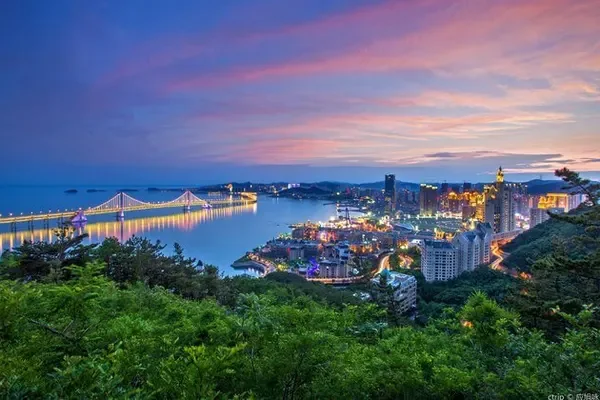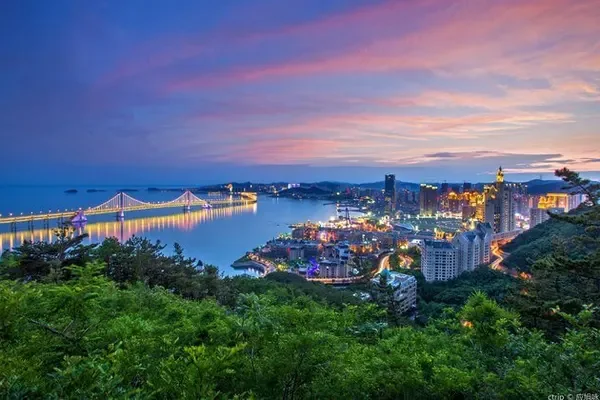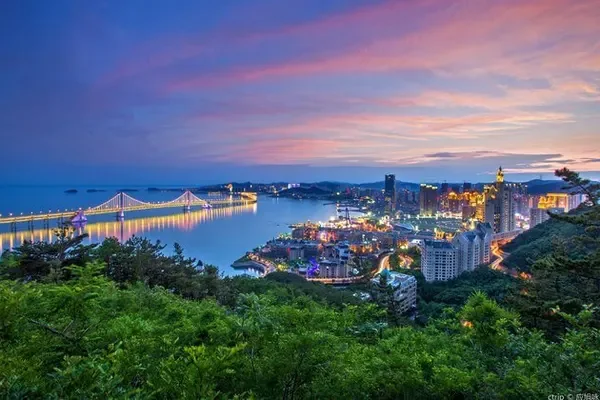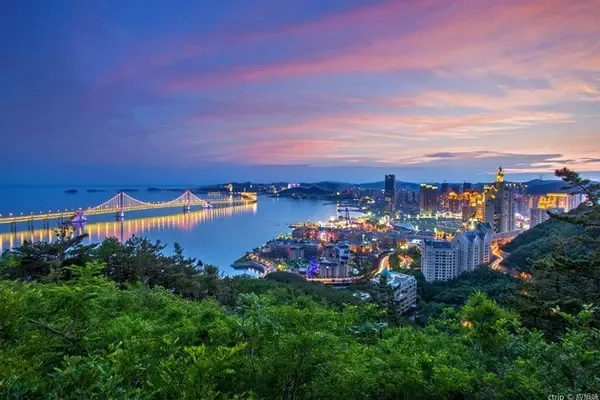The photos in this article are all taken by the author of "Black and White Touch", all rights reserved, and unauthorized use is strictly prohibited!
When returning to Golmud from Hoh Xil the day before, a nail was stuck in the tire. After a night of deflation, the tire was flat the next day.

This is a small problem, and it can be solved with ten yuan, but if you have no experience, you may be fooled into spending thousands of dollars to change the tire! Not long after I started driving, one of the tires was damaged. The 4S shop said the problem was serious and it was easy to blow out. After driving for a long time, the 4S shop saw similar tires again, and either didn't mention it, or reminded it slightly, and never exaggerated the seriousness again. This is the same as the first time to travel to the plateau, the tour guide exaggerated the seriousness of high altitude sickness, many people led the group for a long time, and occasionally there may be occasions where tourists need first aid for high altitude sickness, but from what they say, it means that everyone Can encounter high-reaction fatal things, in order to scare tourists to buy high-priced oxygen cylinders.
Therefore, "integrity" is not a principle for many businessmen. When you meet someone who is "knowledgeable", you can talk about "integrity". This is called "killing".

Roadside tire shop, 20 yuan to take out the nails to repair the tire, continue on the road.
On this day, we will go to Delingha, the capital of Haixi Prefecture, with a journey of 350 kilometers. Before entering the urban area, we will pass Keluke Lake-Tuosu Lake, which is also a scenic spot in Qinghai.

Keluke Lake and Tuosu Lake are two connected lakes, known as the "Sack Lake", located on the Huaitou Tala Grassland about 40 kilometers west of Delingha. Crook is Mongolian, which means "grassy achnatherum beach". The lake covers an area of 57 square kilometers.
"Tuosu" means "ghee" in Mongolian. The area of the lake is more than three times that of Keluke Lake. It is a typical plateau inland saltwater lake surrounded by the endless Gobi Desert.

Although the two lakes are very close to each other and have the same ecological environment and history of change, their posture, style and character are quite different. The water color of Keluke Lake is clear, the lake surface is calm, the surrounding reeds are overgrown, the scenery is beautiful and beautiful, it is better than Jiangnan, it is a brackish freshwater lake, the mud at the bottom of the lake is thick, the plankton is extremely rich, and the aquaculture industry is developed.

Tuosu Lake has a vast surface with no shelter and barriers. When the weather is calm and the sea is calm, the lake surface is vast and the water and sky are the same color, which is magnificent; when the weather changes, the lake is choppy and the waves are splashing. Because it is a saltwater lake, there are few animals and plants in the lake.
There is also an "alien site" here, which is located at the foot of Bayin Aobao Mountain between the two lakes. From a distance, the towering cliff looks like a pyramid. There is a triangular cave on the front of the mountain, and there are a lot of rust-like slag scattered around the cave. And the strange-shaped stones form an interesting contrast with Tuosu Lake.

Legend has it that Keluke Lake and Tuosu Lake were formed by a pair of lovers in ancient times, and they are also called "lover's lake":
A long time ago, beside the beautiful Jinshui Lake in the northern desert, there lived a tribe of Mongolian ancestors. The prince of the tribe had a beautiful daughter named Ke Luke. One day, Ke Luke went hunting with his father, but in a storm, he got lost and was injured. He was rescued by a young man named Tuosu, and the two fell in love with each other. In order to prevent this marriage, the prince asked Tuosu to go to Qaidam far away to show his sincerity. Tuosu rode a white horse to Qaidam, and returned with a bag full of salt. Unfortunately, there was a sandstorm on the way. Lost, Tuosu had no choice but to carry a salt belt on his back and walk on foot, and finally fainted in the vast Gobi due to exhaustion. After Tosu left, Ke Luke watched by the Jinshui Lake every day. One day she saw Tosu's white horse galloping, and she had a premonition that Tosu was in misfortune, so she rode to look for him. A few days later, Baima and Ke Luke collapsed near Tuosu due to exhaustion. Ke Luke stretched his arms forward and crawled towards Tosu with difficulty. Tosu also extended an arm towards Crook. The moment the dying lover touched his hands, he closed his eyes happily. Later, a freshwater lake appeared at the place where Keluke was buried, and a saltwater lake appeared at the place where Tuosu was buried. The arms drawn by the two turned into a small river connecting the two lakes, forming the current Lake of Lovers.

Keluke Lake-Tuosu Lake is also a wildlife sanctuary. There are more than 100 national protected animals such as golden eagles, black-necked cranes, Tibetan wild donkeys, white-lipped deer, whooper swans, kestrels, and sakers. , when the ice of Keluke Lake began to melt, it became a paradise for birds, and groups of fish gulls and other rare birds came here from far away to build nests and have children.

Leaving Keluke Lake, it is already sunset, and the afterglow dyes the distant mountains and near waters red.

The next day, I visited the Haixi State Museum of Ethnology and Haizi Poetry Exhibition Hall in Delingha.
"Delingha" means "golden world" in Mongolian, and it is the capital of Haixi Mongolian and Tibetan Autonomous Prefecture in Qinghai Province. We traveled from Mangya to Golmud, and all we experienced were the scenery of Haixi Prefecture.
(Delingha's mother river - Bayin River)

Haixi Mongolian and Tibetan Autonomous Prefecture is called "Haixi" because it is located to the west of Qinghai Lake. The main body of the territory is the Qaidam Basin known as the "Chinese cornucopia". "Qaidam" means "salt marsh" in Mongolian. So the big treasure here is salt, and most of the bright and colorful lakes are also salt lakes.
Haixi Prefecture has a long history and is the earliest human activity area in Qinghai. The Ancient Tang and Fan Road and the South Silk Road run through Haixi, where nomadic culture and farming culture blend together, forming a rich and colorful cultural accumulation. It was discovered in the ancient times of Haixi Prefecture. Rock paintings, Tubo tombs, etc., present the profound and long-lasting splendid civilization of Haixi Prefecture.

Due to the diversity of civilizations in ancient Haixi Prefecture, ethnic minorities and the culture of the Central Plains have left traces here, and the content is complex, so here is a brief introduction of Tuyuhun.

Tuyuhun originated from Murong Xianbei in Liaodong. They moved westward to the current Haixi Prefecture in the late Western Jin Dynasty, conquered the local Qiang, Di and other ethnic groups, and established the country under the name of the first king Murong Tuyuhun, from 313 to 663 AD , is a minority country that has enjoyed the longest period in Chinese history. It was later extinct between the rise of Tubo and the Tang Dynasty, but its influence lasted until the Song Dynasty more than 500 years later, making great contributions to the prosperity of the Southern Silk Road.

If you are a person who likes poetry, then your impression of Delingha may come from a poem by Haizi - "Diary".
This is Haizi on his way to Tibet, passing through Delingha, the hometown of a close senior of his at Peking University. He wanted to visit his sister but couldn't see her when she was out, so he wrote this little poem expressing his thoughts:
Sister, tonight I am in Delingha, the night is shrouded
Sister, I only have Gobi tonight
At the end of the grassland, my hands are empty
Can't hold a single teardrop in grief
Sister, I am in Delingha tonight
This is a desolate city in the rain
except those who pass and live
Delingha... tonight
This is the only, last, lyrical
This is the only, the last, steppe
i give stone back stone
let victory win
Tonight the highland barley belongs only to him
everything is growing
Tonight I only have the beautiful Gobi, empty
Sister, I don't care about humans tonight, I just want you

In the Haizi Poetry Museum in Delingha, you can learn about the poems and life of this talented poet. He has only stayed in this world for 25 years, but the spiritual light of "facing the sea, the spring is warm and the flowers are blooming" will always light up people's hearts spiritual world...
Starting from Delingha, continue eastward for 200 kilometers to Tianjun County. There are thirteen famous mountains around Qinghai Lake, one of which is called "Tianjun Mountain", which is located in the outskirts of Tianjun County, and the name of Tianjun comes from the mountain. There are 15 ethnic groups living in Tianjun County, mainly Tibetan. In addition to Tibetan Buddhism, there are also different ethnic cultures such as the Queen Mother of the West culture. The cultural characteristics of folk customs are very strong.


There is a stone forest on Tianjun Mountain. Like the Kunming Stone Forest introduced earlier, it is a wonder bred by karst landforms. It was formed in the Carboniferous period about 350 million years ago. The difference is that the Tianjun Stone Forest encountered the uplift of the Qinghai-Tibet Plateau during the formation process, resulting in water shortage and drought, and the water erosion process was not completed. After a long period of wind erosion, it formed a towering, majestic and unique style.

Tianjun Stone Forest is a niche scenic spot. It can only be reached by turning at the entrance of a certain village when it is close to Tianjun County for more than ten kilometers. The road is a dirt and stone road, which is bumpy and difficult to walk.

The scenery here is beautiful, with thousands of scenes, hundreds of stone forests stand upright, some are straight and tall, some are graceful, some are arrogant, some are naive and lifelike. They are mixed in color, painted horizontally and vertically, some are elegant, some are strong, natural and harmonious, wonderful and interesting. Among them, the stone forest at the highest point is lined up in a row, forming a shape like the Iron Throne in "A Song of Ice and Fire", not only similar in shape, but also somewhat similar in momentum.

The grassland under the stone forest has been dyed yellow by the autumn wind. There are few tourists here, and undisturbed yaks are grazing leisurely. Huge yaks are all over the mountains and plains. From a distance, they also become black sesame seeds on the broad undulating grassland.

Tianjun travels 80 kilometers eastward to Qinghai Lake Cliff Scenic Area, which is the northwest shore of Qinghai Lake and belongs to Haibei Tibetan Autonomous Prefecture.

Qinghai Lake is the largest lake in my country, with an area of 4625.6 square kilometers, located in the northeast of Qinghai Province. Not only Qinghai is named after Qinghai Lake, but Qinghai’s administrative division is also bounded by Qinghai Lake, including Haixi Prefecture, Haibei Prefecture, Haidong City, Hainan Prefecture and other regions. Qinghai Lake is a must-visit place for traveling in Qinghai. The general route is to start from Xining and go along the south bank of Qinghai Lake to visit Daotang River, Riyue Mountain, Erlangjian and other scenic spots, especially in July and August when the rape blossoms are in full bloom. It is the most beautiful season in Qinghai Lake.

I visited the south bank of Qinghai Lake two years ago. Although it was not the season of rape blossoms, I also enjoyed the magnificent beauty of Qinghai Lake. This time I came to Qinghai Lake again in mid-September. I have seen the rapeseed flower landscape several times in Sichuan and Tibet, so I decided to visit the North Shore, which I have never been to.
The cliff is the most talked about scenic spot on the North Shore.

This is indeed a fascinating beauty, with a wide and soft turquoise lake, as well as steep and rough cliffs, plus the colorful wind horses floating in the wind on the cliffs and the solemn and solemn pagodas and rocks, it is like a mysterious picture. And a sacred extraterrestrial wonderland.

It's just that this fairyland may really "should only exist in the sky and not be heard in the world" in the future, because it has been included in the ecological protection area and will no longer be open to the public.
Travel 130 kilometers eastward from the cliff along the north shore of Qinghai Lake to Xihai Town.

(Okai Cultural Square, Xihai Town)

Xihai Town belongs to Haiyan County, Haibei Tibetan Autonomous Prefecture, and is the capital of Haibei Prefecture. It is located in the Jinyintan Grassland at the source of Huangshui River. You may not be familiar with the name "Xihai Town", but you must have heard of its other name - "Atomic City". This is the place where my country developed nuclear weapons in the 1960s, and it was a military restricted zone until the end of the 1980s. , was once a secret base that could not be found on the map, but gathered the most powerful brains in China at that time.

In addition, this is also the "faraway place" written by Wang Luobin, the king of western songs. The song "In That Faraway Place" was composed on the Jinyintan Grassland.
(Jinyintan Grassland)

Atomic City Scenic Area and Wang Luobin Music Art Museum are must-see attractions in Xihai Town.
The Atomic City Scenic Area includes the Atomic City Memorial Hall in the urban area, the underground command center, the upper star station, the second branch factory and the detonation test site in the northern suburbs. Let's go to the Atomic City Memorial Hall first.

The predecessor of the Atomic City was the state-owned No. 221 Factory of the Second Ministry of Machinery Industry. It was built from 1958 to 1964. It was the first nuclear weapon research and development base in my country. Because of the birth of the first atomic bomb and the first hydrogen bomb, it formed the "two bombs" It is called "Atomic City" because of the "one star" spirit. It has an epoch-making strategic position and milestone significance in the development history of New China, and it is the place where the Chinese nation stands up.

The interior of the memorial hall displays the history of the world's atomic bomb research and development, the background of my country's nuclear weapon research and development, the hard work of scientific researchers, the brilliant victory of the successful explosion of the first atomic bomb and the first hydrogen bomb, etc., which are very detailed. An article in the movie "My Motherland and Me" tells that the scientist who developed the atomic bomb in the Northwest could not recognize his lover due to confidentiality reasons, which touched countless audiences. In fact, there are many other stories like this, which are the real history of the year .
The detailed content will not be shared here (it will not pass the review), if you are interested, you can go and see it in person.

(Dongfeng 2A missile body, the first generation of medium and short-range surface-to-surface missiles developed by my country)

The underground command center is located under the compound of the Haibei Prefecture Post Office. It is the eyes and ears of the original 221 factory, the support for contact with the outside world, and an important position for command. The command center is built 9.3 meters below the surface and is made of pure reinforced concrete. It is a solid and hidden underground bunker.

The command center is composed of 8 parts: carrier room, wiring room, ventilation room, command room, generator room, power distribution room, command room, manual exchange room and telegraph room. It is specially built to prevent enemy air attacks, and its iron gate weighs Three and a half meals, with a thickness of 23 centimeters, the communication system inside can be kept unblocked at all times to communicate with the central government.

Shangxing Station is the eleventh factory area of the original 221 factory, located 1.5 kilometers north of Xihai Town. After the assembly of my country's first atomic bomb was completed in the second branch factory, it was transported to Lop Nur, Xinjiang by zero-time special train here. According to the memories of the staff at that time, the delivery operation was carried out secretly at night. People thought it was just an ordinary cargo transportation, but in fact they completed a special mission of great significance.

The picture below shows the second branch factory, which is mainly responsible for the processing of explosives, synchronous focusing tests, processing of pyrotechnic components and assembly of nuclear weapons. It is also called the "final assembly factory". The buildings in the factory are all bunkers and semi-bunkers, and China's first atomic bomb was born here.


The picture below shows the detonation test site, also known as the "Sixth Branch Factory" and "Shooting Range". One of the iconic buildings.


Finally, we went to visit the Wang Luobin Music Art Museum.
"In that distant place, there is a good girl. When people pass by her tent, they all look back and look nostalgic..." The brisk and beautiful lyrics sublimate the meaning of love and life, and the incomparable melody travels through the Overcoming the barriers of time and space, it has spread all over the world. Its author is Mr. Wang Luobin, a famous composer known as "King of Western Songs", "Father of Folk Songs" and "People's Musician".

When it comes to Wang Luobin's masterpieces, there are really too many. Although most of his works were created in the 1930s and 1940s, they still sound very fashionable, or have no obvious sense of the times. It is not complicated, and the lyrics are not gorgeous, but it can be deeply rooted in the hearts of the people, and it will be sung endlessly. Let me just say two songs, you must have heard them, such as "Half Moon Climb Up", "Girl in Osaka Castle", "Pick Up Your Hijab", "Youth Dance"...It can be said that, Wherever there are Chinese in the world, there are Wang Luobin's songs!
You may think that a talented artist like Wang Luobin must be living a life that people yearn for! After all, without a sunny heart, how could you write so many sunny songs. In fact, Wang Luobin's life was full of ups and downs, he was imprisoned twice, and he was derogatory in his later years, but he always kept his original intention and never fell into it. He devoted his life to collecting, adapting, and creating more than a thousand western folk songs. People bring the enjoyment of beauty.
Therefore, whether a person's spirit is sunny or not has nothing to do with whether his body is smooth or not. On the contrary, if his body is too smooth, his spirit will easily become numb.

Wang Luobin was born in Beijing on December 28, 1913. His father, Wang Dezhen, was a painter, but he loved national musical instruments. He liked Peking Opera and Kunqu Opera very much. Under the influence of his family, Wang Luobin fell in love with music since he was a child, and he has an amazing sensibility and understanding of music. memory. In 1919, Wang Luobin entered elementary school, during the "New Culture Movement", and came into contact with some western song modes, so he learned many school songs. In 1924, Wang Luobin entered the middle school established by the church and studied Western harmony in the choir. In 1928, he created his debut work "Over the Sea" in Harbin.
In 1931, Wang Luobin was admitted to Peking Normal University and received systematic music education. When he graduated, he composed music for Xu Zhimo's poem "Yunyou".
Soon after the "September 18th" Incident, Japan invaded the three eastern provinces. Wang Luobin hoped to use music to arouse the patriotic enthusiasm of the people, and created "Slave Love", which is an earlier anti-Japanese song in our country. After the "July 7th" Incident, Wang Luobin, who did not want to be a subjugated slave, fled Beijing and went to Xinjiang to carry out anti-Japanese propaganda work. When he passed Liupan Mountain, he was shocked by the beautiful melody of the local "flowers", and immediately adapted "The Flower of Tears" Heart Flooded". The desolate, tragic, profound artistic conception and lyrical melody of folk songs of ethnic minorities made Wang Luobin realize that "the most beautiful music is in his own country". On the fertile soil of folk music.
In 1938, Wang Luobin participated in anti-Japanese war performances with the Northwest Anti-Japanese War Troupe in Hexi, Gannan, Qinghai and other places. During his more than a year in Lanzhou, he collected and adapted classic songs such as "Kangding Love Song" and "The Girl in Dabancheng". In the spring of 1940, when Wang Luobin filmed "Long Live the Nation" with the film director Zheng Junli on the Jinyintan Grassland, he created the immortal work "In That Faraway Place". the world.
This period was the peak period of Wang Luobin's creation. On the banks of Qinghai Lake and under the Qilian Mountains, he was intoxicated by the vast grasslands and the singing of herdsmen, sitting on the ground with brothers from ethnic minorities, and expressing his emotions with unrestrained dance steps and mellow wine. , a series of classic melodies were born: "Pick Up Your Hijab", "Alamu Khan", "Half Moon Climb Up", "Mayila", "A Lovely Rose"... ..
(Manuscripts of some of Wang Luobin's works)

In January 1941, Wang Luobin was arrested by Kuomintang agents on the charge of "communist suspicion" and imprisoned in Shagou Prison, Hebei, Lanzhou. Song" and many other inspiring songs. It was not until March 1944 that Wang Luobin was acquitted after being rescued by various parties.
In April 1960, Wang Luobin was framed and arrested and imprisoned for "counter-revolutionary crimes". He was later sentenced to 15 years in prison. "And other songs, until he was released after serving his sentence in 1975, life was hard.
Wang Luobin once said: "Life is a beautiful tragedy. Beauty is in heaven and beauty is also in hell. There is beauty in happiness, and happiness itself is beauty. There is beauty in pain, and beauty is more real, and real pain is beautiful."
(The writer Sanmao once visited Wang Luobin in Xinjiang, and Wang Luobin composed the song "Waiting" for her)

In February 1995, Wang Luobin was hospitalized due to cholecystitis and underwent cholecystectomy. After the operation, he participated in concerts and performances in Beijing, Xiamen, Dalian, Fuzhou and other places. During his serious illness, he also composed the last two songs of his life ——"The Road of Life" and "Singing Evergreen". At 0:40 on March 14, 1996, Wang Luobin finished his music life journey and went to that distant place. The farewell ceremony for Wang Luobin's body was held in Urumqi. There was no mourning and music at the scene that day, only "In That Faraway Place" was played continuously...

It's a bit magical to say that the same Jinyintan grassland is full of romantic joy of singing and dancing and the intensity of nuclear weapons at different times. Does it symbolize the eternal pursuit of human beings for power and beauty?
Come here, the next stop - Xining.




